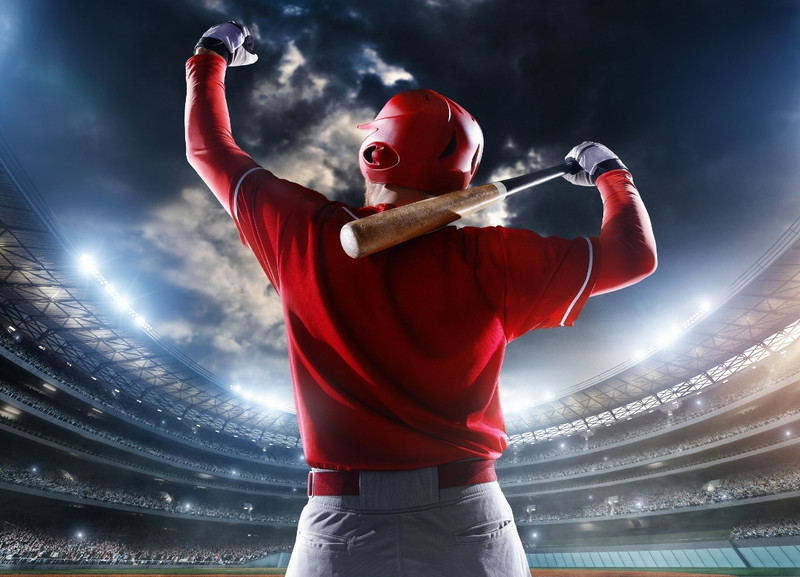Figuring out exactly which baseball bat to use can be a challenge. There are many things to consider when choosing your perfect bat. Here are the basic components to keep in mind, as well as some definitions and advice based on your age and skill level.
How to Choose a Baseball Bat
Choosing a wood baseball bat is about three things:
1. What type of hitter you are:
- If you are a singles/contact hitter, go with a bat that maximizes your swing speed.
- If you are an extra base hitter, go with a bat that is balanced, and balances swing speed with power.
- If you are a power hitter, go with a bat that has the biggest and/or longest barrel for maximum power. Each step from singles hitter to extra base hitter to power hitter adds a ½ ounce of weight.
2. How you miss-hit:
When you miss-hit off the barrel end (and avoid getting jammed), go with ash...as long as you are diligent about bat orientation when you make contact with the ball.
- If you tend to miss-hit further down the barrel, go with maple (just avoid the barrel end miss-hits).
- If you miss-hit all over, go with birch. Birch has some flex to help with the end shots (where ash excels), but is closer in hardness to maple. This helps with the jam jobs and provides more pop than ash.
- If you’re new to wood, birch is your safest bet.
3. What feels good in your hands and allows you to keep up swing speed.
There are primarily 3 types of handle and knob combos:
- One for if you prefer your hand to rest on the knob, like a metal bat
- Another flares from the handle into the knob, with varying amount of flair and just enough knob to catch your hand.
- There are even bats that have no knob.
- Bat drop weight will play a big role in comfort and ease of swing, so be sure to choose a bat that pairs handle and knob feel with swingability. Grip tape and skins add nothing to durability. So, if you like to thicken up your bat with such, consider a thicker handled bat that actually adds durability.
Which Size Baseball Bat Should I Use?
If you already swing a metal bat, stick with the same length for your wood bat. If you don’t know what length your current bat is, hold your arm out and measure from the middle of your chest to the end of your middle finger. This method is a bit old school, but you should be able to determine the general size this way.
Practicing with a wood bat will improve your hitting with a metal bat. When training with wood, you learn plate discipline and have to focus more on hand/eye coordination in order to hit the sweet spot. Metal bats engineer an artificial sweet spot, which leads to less disciplined hitters, and of course, artificial results. A wood bat never lies!
What is drop weight?
Drop weight, also called drop weight ratio, is the difference between bat length and weight. To determine a bat’s weight in ounces, take the drop weight number and subtract it (if the number is negative) from the bat length.
- A -2 drop weight, 34" bat weighs 32 ounces (34 -2 = 32)
- A +1 drop weight, 34" bat weighs 35 ounces (34 +1 = 35)
- A zero drop weight means the bat weighs the same as its length
Drop Weights for High School Hitters
For high school age and up, the drop weight must be -3 or greater, typically ranging to -2. A younger high school hitter and/or singles hitter will want a -3 drop weight to allow for fastest swing. An extra base hitter (or up to a high school power hitter) will want a -2.5 drop weight bat for bat stability and to balance swing speed with power. A true power hitter will seek a -2 drop weight for maximum power. Note that the entire span from singles hitter to power hitter is one ounce!
Drop Weights for Youth Hitters
12-13 year olds who are getting ready for high school ball should look for a -5 drop weight with a full size 2.5” barrel. A youth who is 5-11 years old should look for a -8 to -7 drop weight, with a 2.25” barrel length. This yields a nice level swing to drive the ball, without being too heavy or light to hurt swing form. Metal youth bats are typically artificially light, producing golf like swings.
Why are Baseball Bats Cupped?
The carved out area at the barrel end of a wood bat is called cupping. This feature allows bat makers to get as close as possible to the specified drop weight. Cupping is preferred by most full-size bat hitters for two reasons:
- it helps balance the wood bat—just slightly
- they see other bats cupped so they think it's what they should choose
Phoenix bats are cupped at 1.5" in diameter and go straight down, leaving a thicker wall around the cup for enhanced structural integrity.
There’s a lot to consider when choosing your baseball bat. Check out our resources on selecting wood bats and frequently asked questions to aid in your choice. If you’re still unsure, we’re happy to help you make a decision, and we offer a risk-free guarantee!
Check out our related posts!

